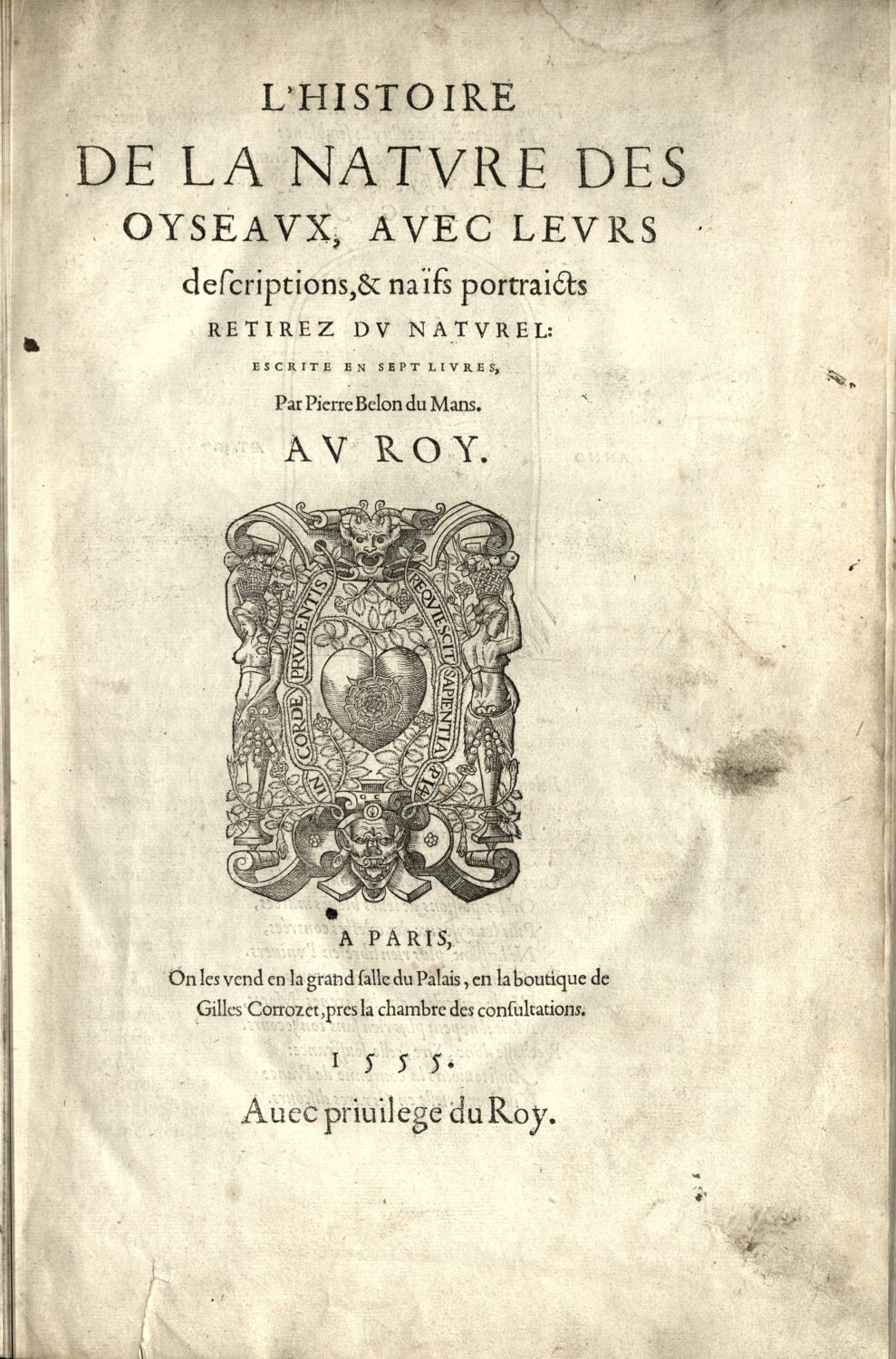
The NHSN library collection contains many rare, valuable and scientifically influential books encompassing the period from the sixteenth century to the present day. As a library volunteer I have the good fortune to be able to have access to its many treasures and enjoy providing a summary of individual works highlighting their background and importance. The earliest ornithological work and one of the oldest books in the collection is Pierre Belon’s “L’histoire de la nature des oyseaux” published in 1555.
One of the primary reasons underpinning the wide-ranging breadth and depth of the library collection has been the generous donation of books by society members, often as bequests. This impressive and significant book was part of the personal collection of Harry Tully, who bequeathed it to the NHSN in 1951, along with around 1660 primarily ornithological works, plus a substantial cash legacy. Tully was a successful maritime businessman, an active society member and one of its major benefactors. His splendid Georgian bookcase which had been in his Alnmouth home was also obtained by the society and is now housed in the atmospheric Council Room, which is located adjacent to the library. Published in Paris the book is comprised of seven parts in one volume. It includes a portrait of Belon, two skeletons used as diagrams to provide a comparison between the anatomical structure of a man and a bird, and 158 large woodcuts of individual birds. It was published encased in a contemporary calf binding which is still present in the library copy of the book. Belon, in his address to the reader, states that various artists contributed to the illustrations, although he names only Pierre Gourdel.
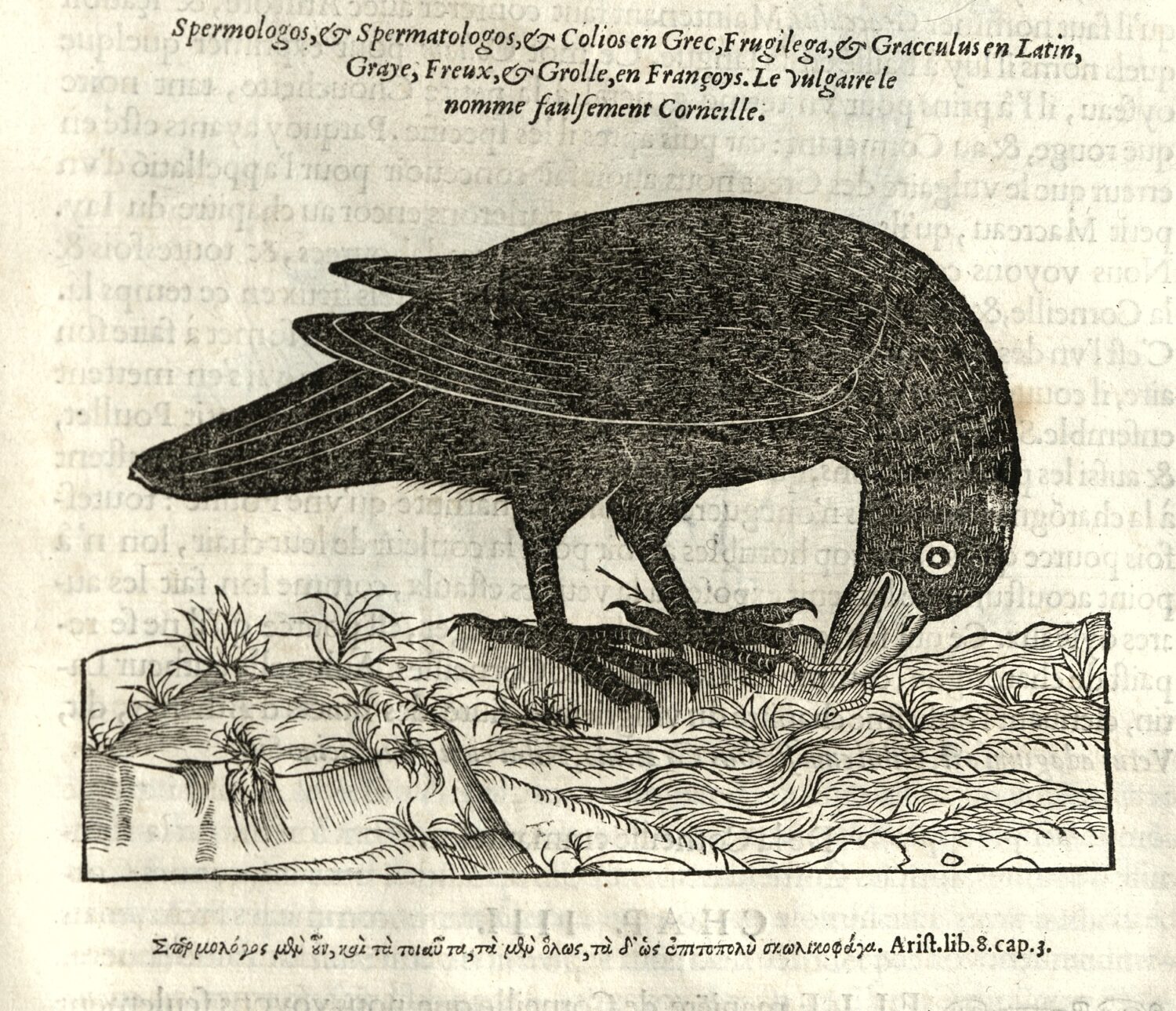
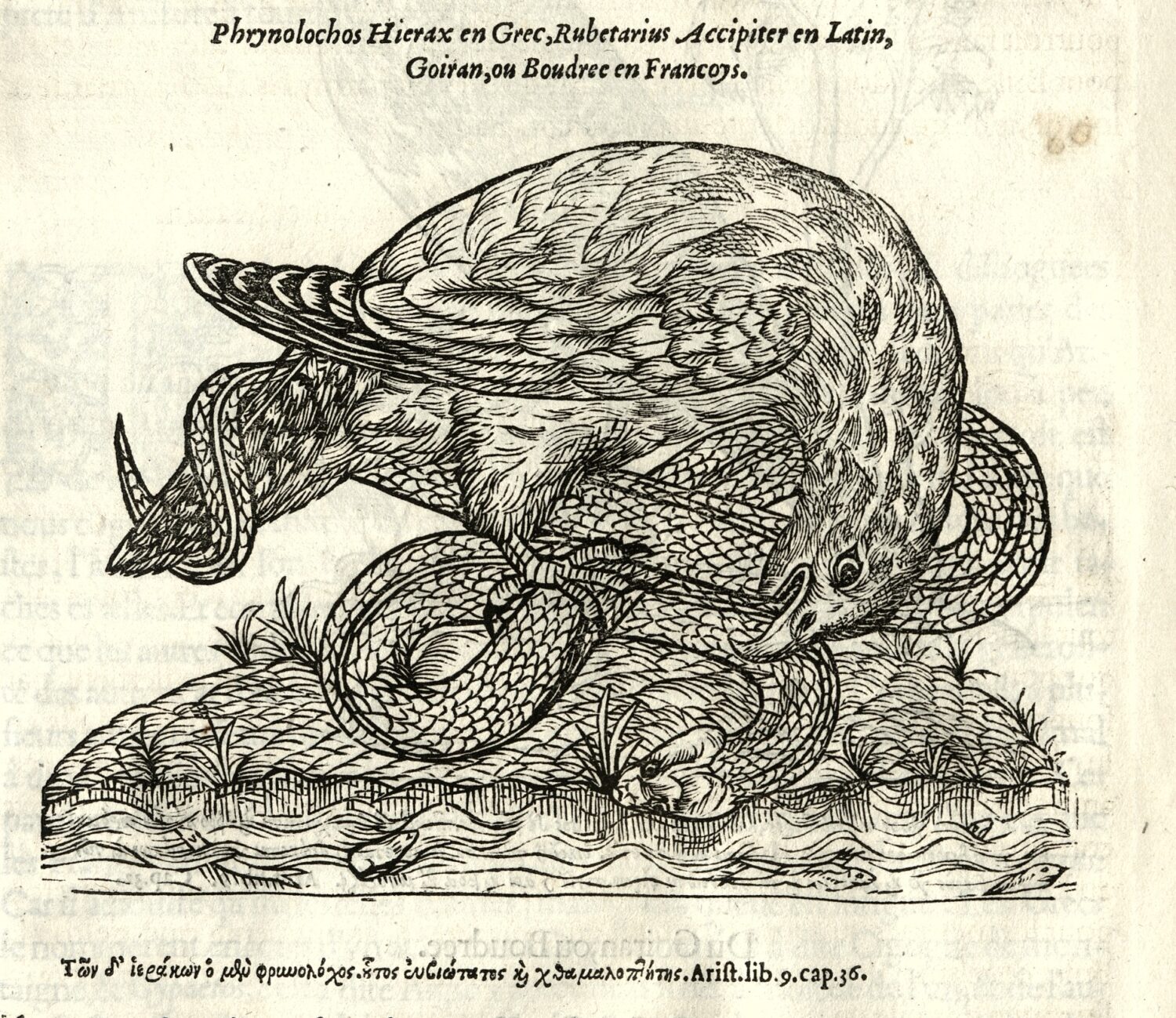
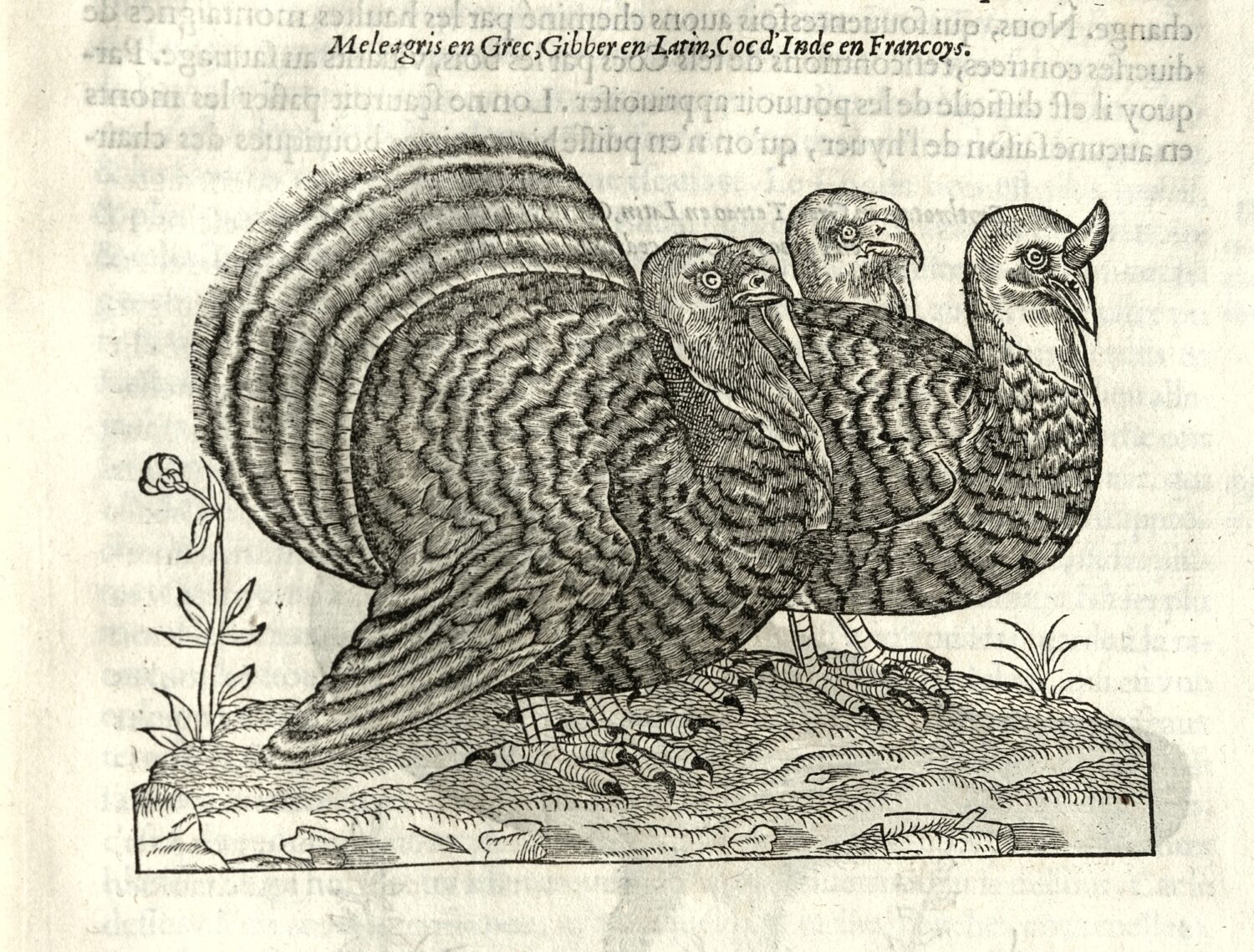
Belon’s publication was one of the first of its period to be based on direct observation and original drawings of birds and is a major work in the field of natural history. Belon attempted to match the names of birds used by the classical authors Aristotle and Pliny with the species then in France, hence the Greek captions accompanying the woodcut illustrations. The book is one of the first ornithological compendiums to be based, in part, on field observations and many of the bird portraits were taken from actual specimens.
This book was the highlight of his works and brought him the greatest fame. In fact, it was so significant that King Henry II of France accepted Belon’s dedication of the text to the crown. This dedication was important because it was accompanied by the promise of a royal pension which unfortunately for Belon did not materialise.
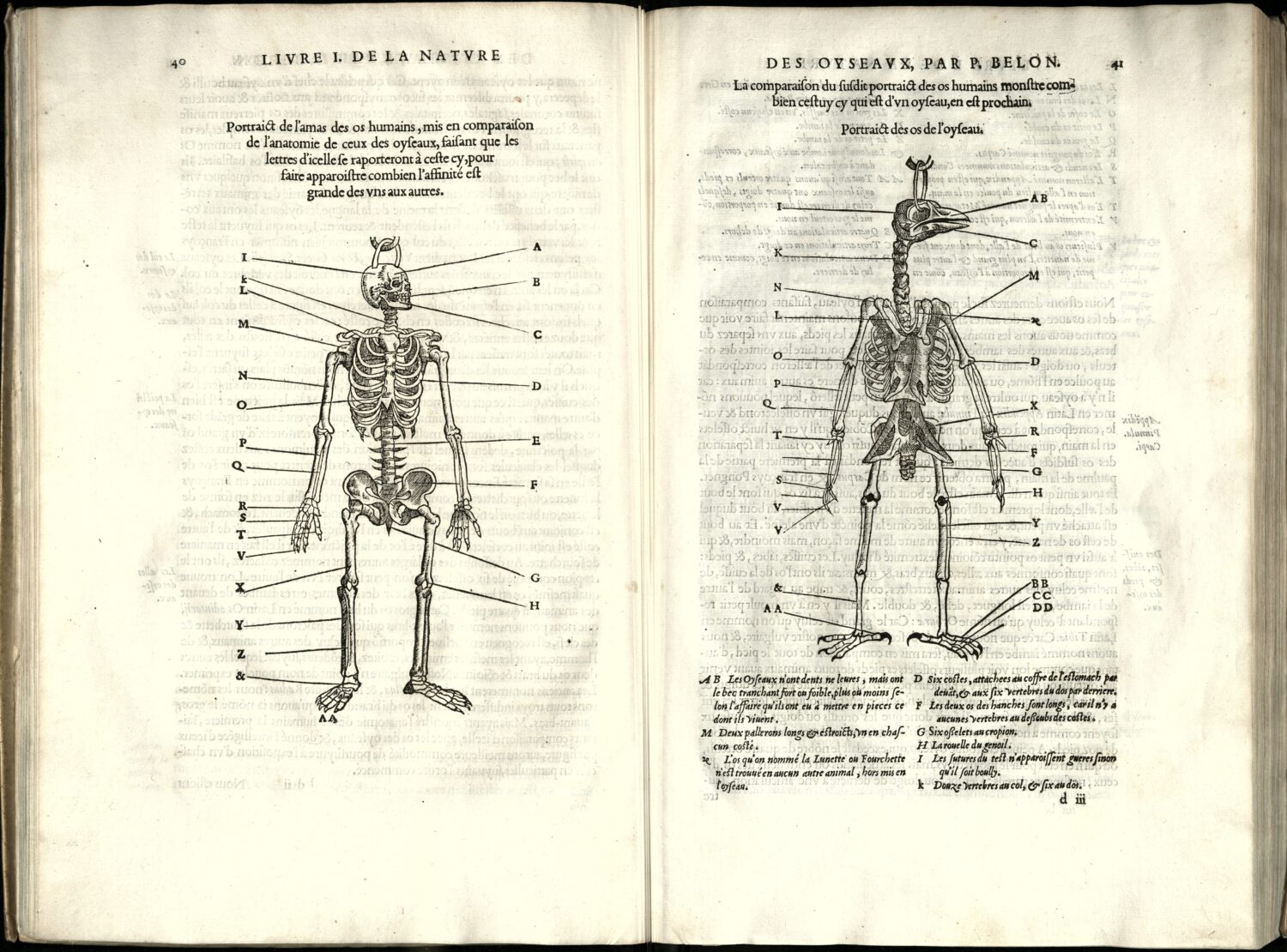
Pierre Belon was one of the first and most important naturalists to rely on his own exploration to further his research. He is considered a significant contributor to the field of comparative anatomy due to his systematic analysis of similarities between the skeletal systems of humans and birds. In a famous illustration included in the book Belon made a direct comparison between bird and human skeletons, indicating with the same letter the homologous bones.
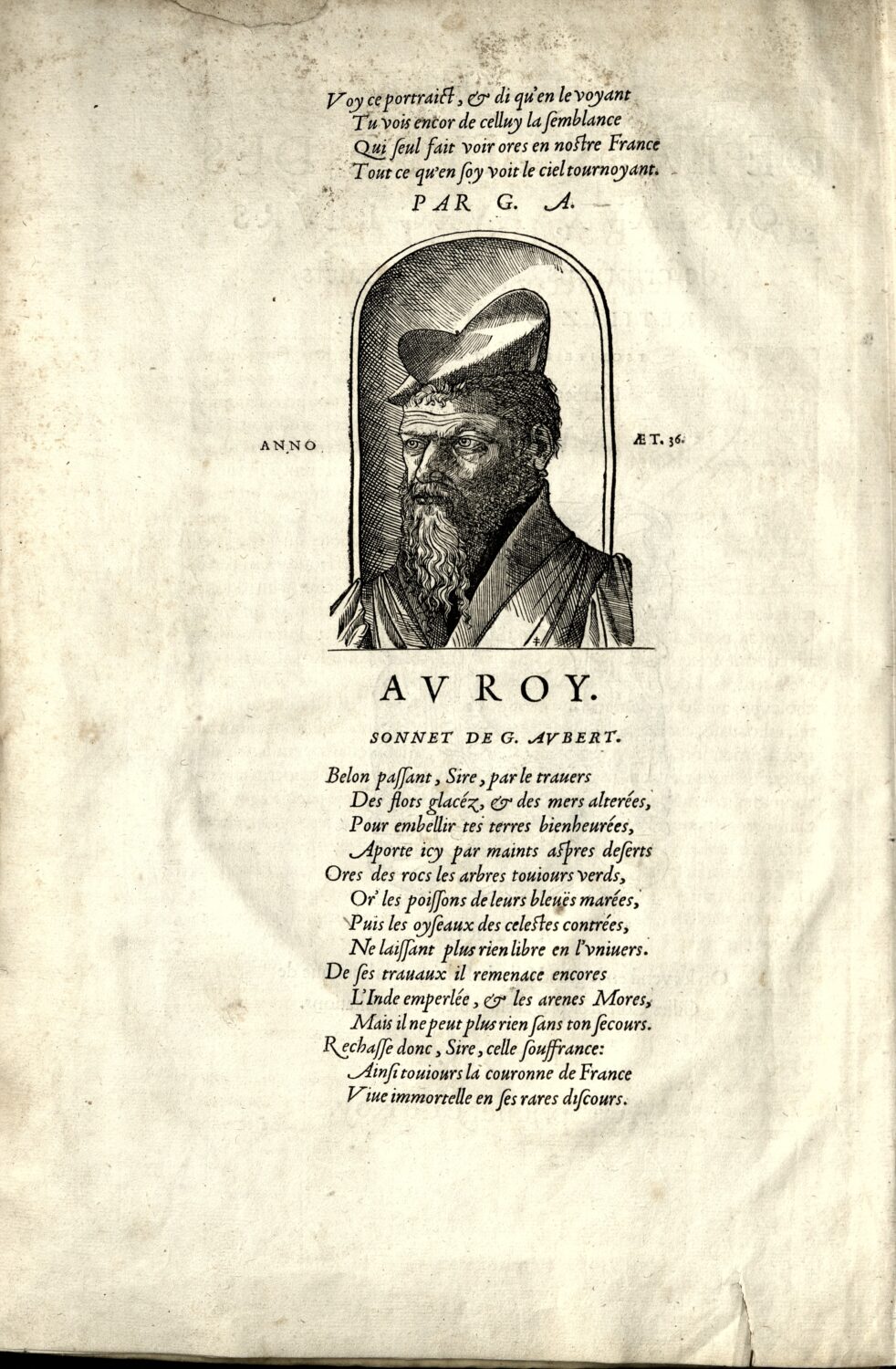
Born in 1517 Belon was a French traveller, naturalist, writer and diplomat. Like many others of the Renaissance period, he studied and wrote on a wide range of topics including ornithology, ichthyology, botany, architecture and Egyptology.
Belon studied medicine in Paris and became a pupil of the botanist Valerius Cordus at Wittenberg. When Cordus died in 1544, Belon returned to Paris and came under the patronage of Francoise de Tournon, who subsidised his study and extensive travel. With this support Belon published books on fish, trees and ornithology in the early 1550’s.
His death came as the result of being stabbed in the Bois de Boulogne in Paris in April 1564, an event that was surrounded in mystery. It is thought he may possibly have been assassinated because of his diplomatic work or murdered by unknown thieves.
Because of its age and rarity, the Belon book is stored in a secure location. However, if any member of the society would like to view this wonderful publication, then please contact the librarian who will make the necessary arrangements. Please use the email address library@greatnorthmuseum.org.uk or telephone 0191 208 3555.